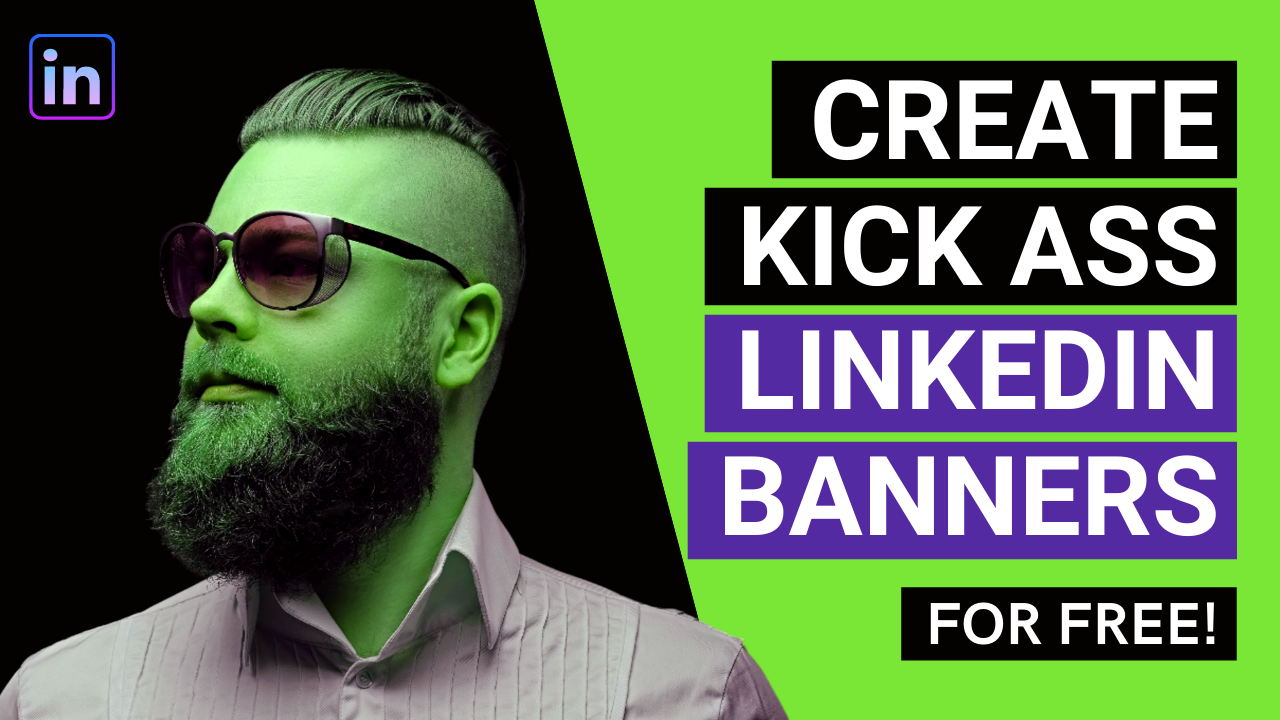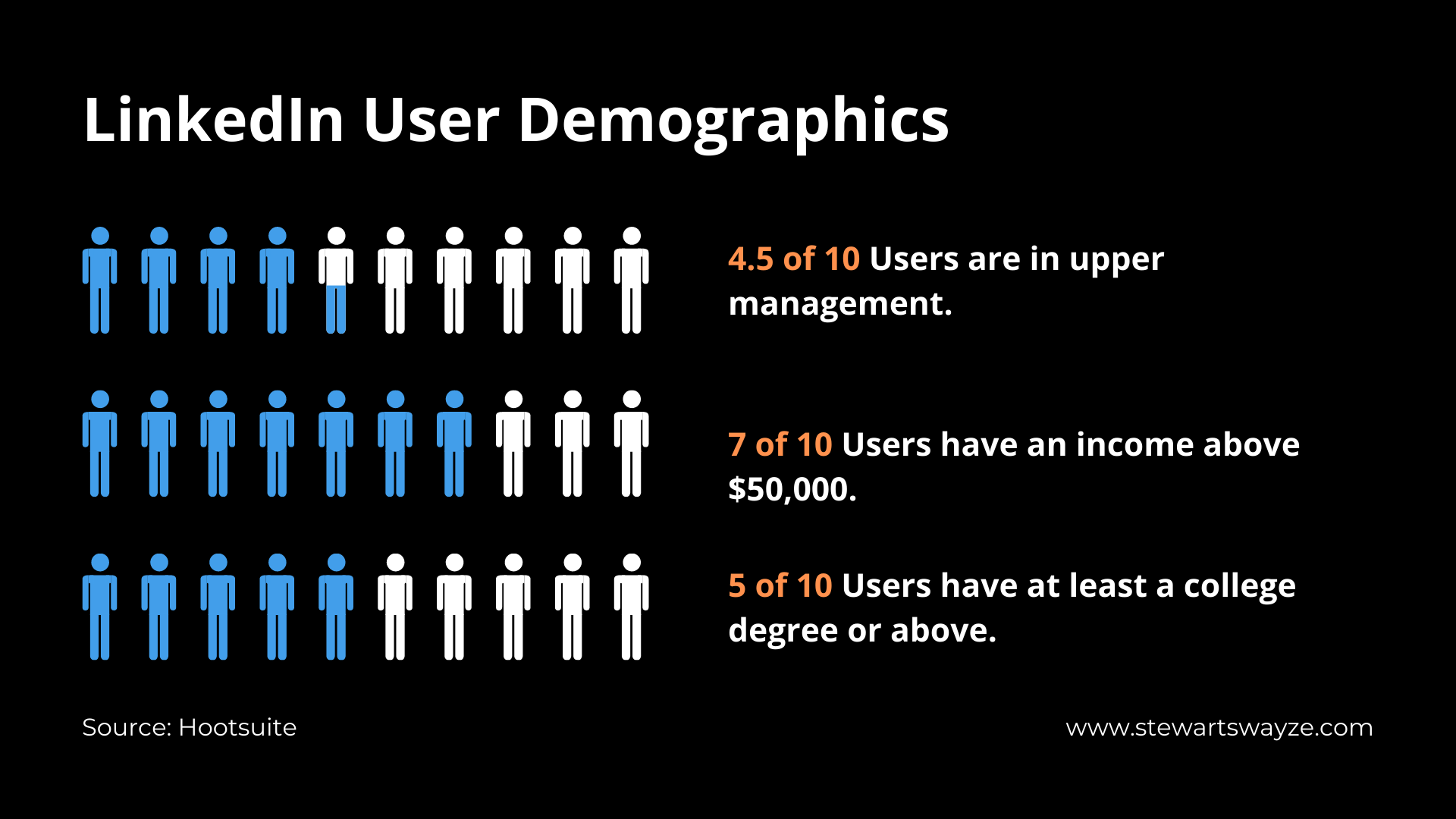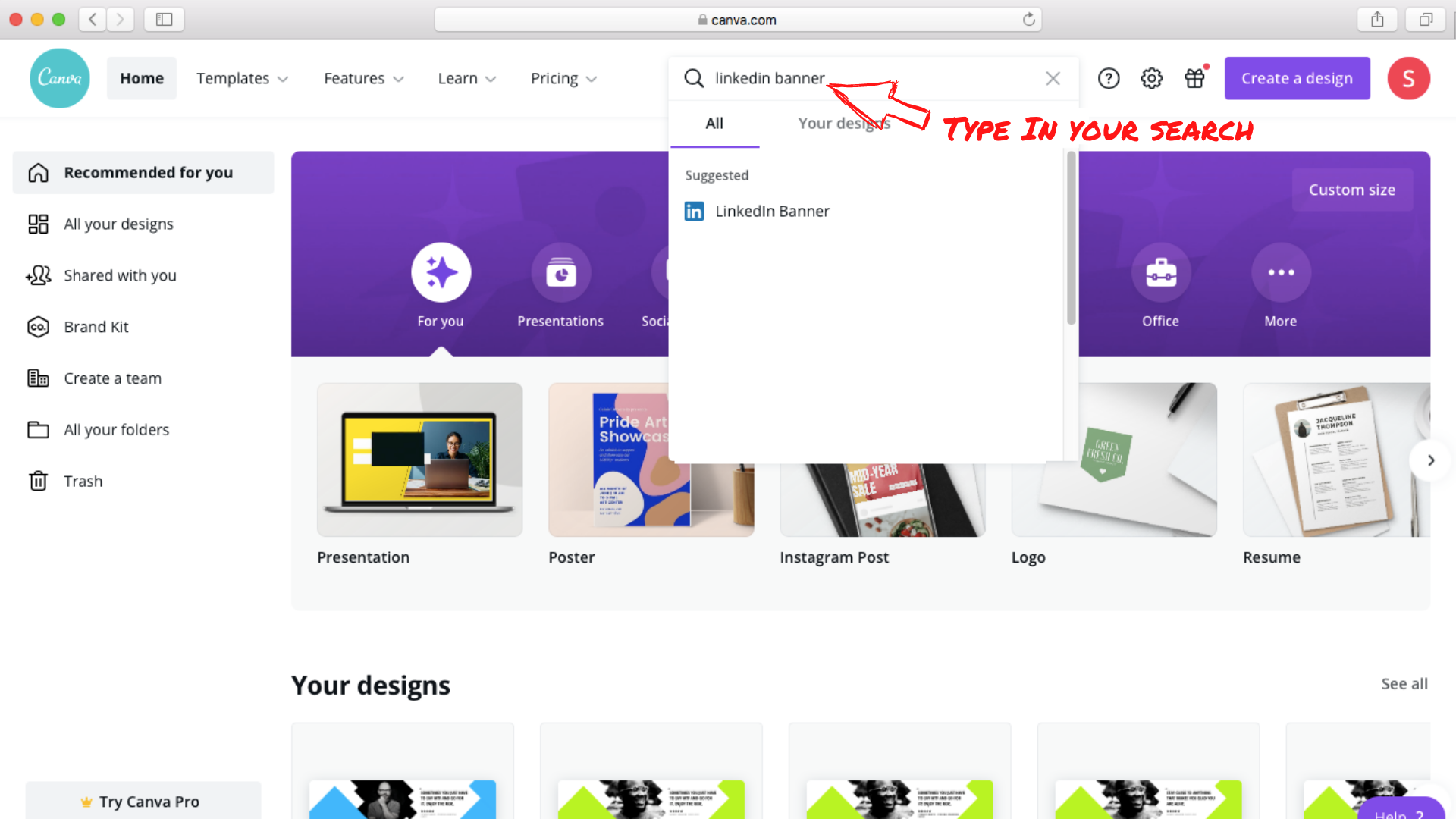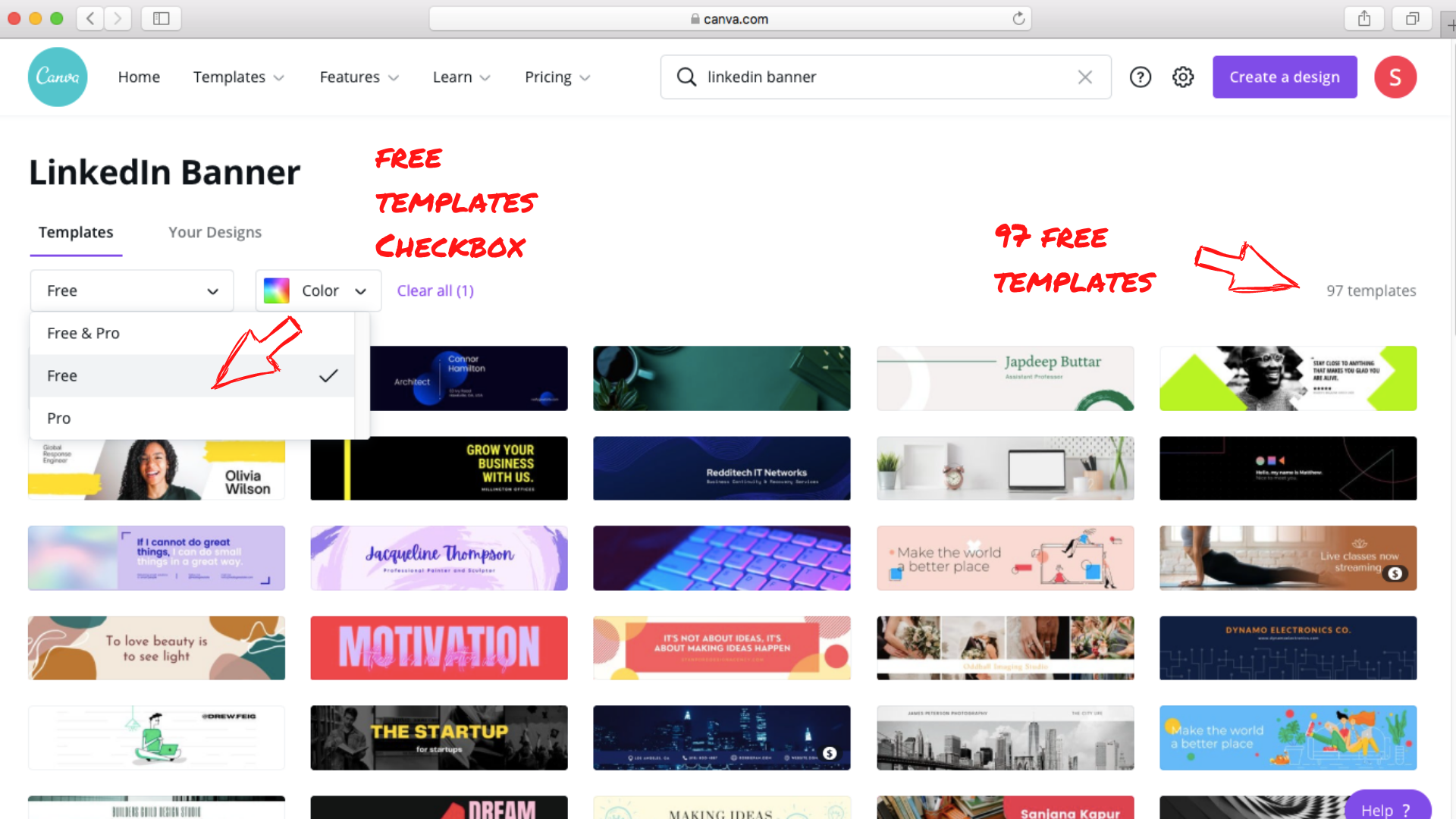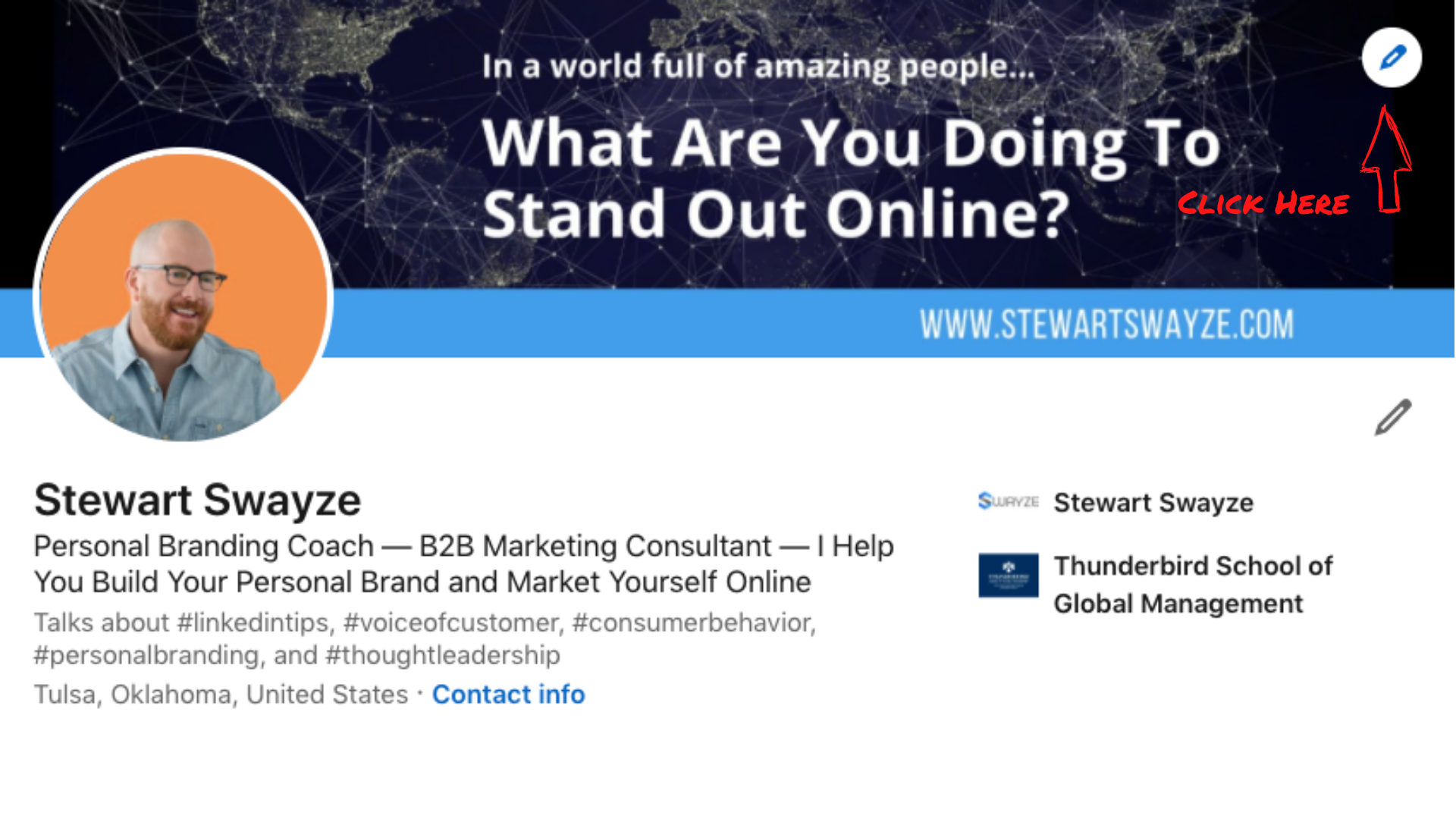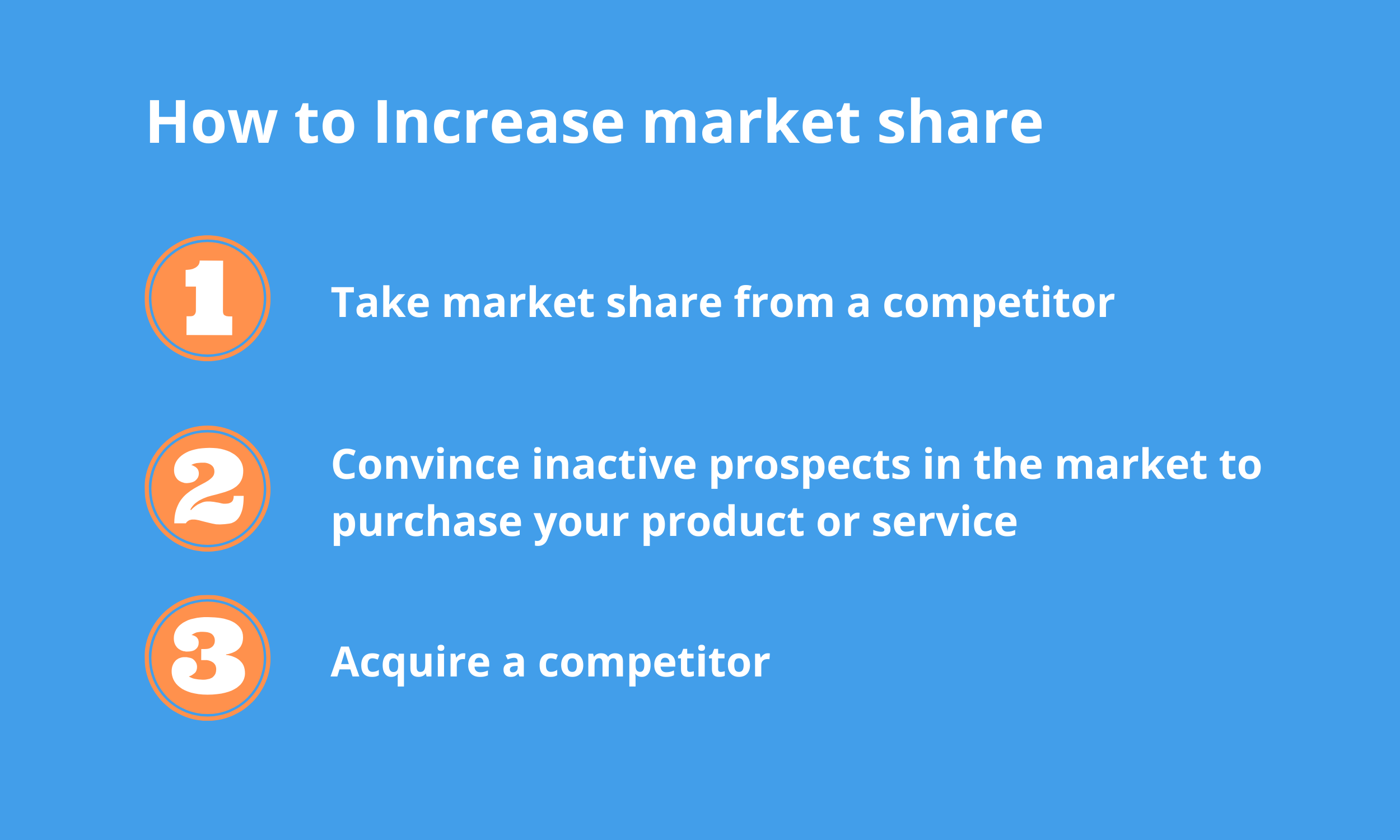Creating a Custom LinkedIn Background Photo
In this article, I'm going to give you step-by-step instructions on how to create a kick-ass LinkedIn background photo for free and in less than 5-minutes.
If you're reading this article, I'm sure you already have a LinkedIn profile. But, before we jump into creating your LinkedIn background photo, let's quickly talk about why LinkedIn is important to you.
The Challenge: It’s Hard to Stand Out on LinkedIn
Unlike other social media platforms, LinkedIn is polished.
The platform is full of intelligent, educated, and highly successful people.
4.5 of 10 users are in upper management
7 of 10 users make above $50,000
5 of 10 users have at least a college degree or more
LinkedIn users are writing, posting, and engaging in deep business and technical conversations.
For the average user, it's hard to stand out.
But you're not average. You see the opportunity.
When everyone is wearing the "traditional" blue shirt, grey pants, and brown shoes…
You're going to slide in there with some color, some pizazz...
...followed by your keen ability to cut through the crap and give your audience the exact content they're looking for.
The Opportunities on LinkedIn
LinkedIn is growing.
There are over 600 million users across 200 countries.
The fastest-growing demographic is 46 million students and recent college graduates.
You can use the platform to build your brand, develop new skills, market your business, and generate leads.
That means LinkedIn provides a massive opportunity for you to take control of your destiny by standing out in front of a professional audience.
Using a LinkedIn Banner to Stand Out
Your profile picture and LinkedIn background photo are the first things people see when they visit your profile.
That means having a custom background for LinkedIn gives you the perfect opportunity to market your business, stand out from the crowd, and build your personal brand.
Your LinkedIn profile picture should be more professional. A good headshot.
But your banner, your LinkedIn background photo, can show off your personality, point people to a specific message, or act as a way of marketing you or your company.
And because size matters, the banner size for LinkedIn is 1584 wide by 396 high (pixels) or a 4:1 aspect ratio.
By the way, if you might hear or read LinkedIn banner, LinkedIn background image, or LinkedIn cover or LinkedIn background photo...They all mean the same thing.
How to Create a LinkedIn Background Photo in Less Than 5-Minutes
Let's jump into how to make professional backgrounds for LinkedIn for free.
Step 1: Click here to head over to www.canva.com and log in
Once you log in, you'll reach the home page of Canva, which can be a little confusing if you haven't used it before.
But, don't worry, when you follow the steps below, you'll create a spectacular LinkedIn background photo.
Step 2: Search for "LinkedIn Banner"
Go to the search function in the top center of the screen. Type in the search, "LinkedIn banner."
Click the button to go to the next screen.
Step 3: Narrow Down to Free LinkedIn Banners
Now we've pulled up all the LinkedIn banner templates that Canva offers. You can see on the right-hand side that Canva has 140 templates.
But this includes free and paid banner templates. I have Canva Pro, but right now, I'm logged into a free account to show you the real experience you'll find when using a free account.
To get the free banner templates, go to the drop-down on the left-hand side. Click the free checkbox.
You can see that there are 97 free templates for you to choose to make your LinkedIn background photo.
Scroll through them a little.
Step 4: Select a LinkedIn Banner Template
Scroll through the free LinkedIn banner templates. Find the template that's best for you and represents your personal brand. I selected one for this example. Once you click, it will take a little time to pull up the template.
Step 5: Get Oriented with the Customizable Options of the Template
Move around the LinkedIn Banner template to see what you can customize. For the example banner below look at the highlighted areas.
For the text, there's a quote that we can change. It looks like some sort of award this person won. We're going to change that too.
Then, you have the stock photo and what Canva calls elements.
Elements are the different building blocks, like squares, triangles, circles, and other things that Cana allows you to customize on this particular template.
Step 6: Customize the Text
The first thing you can do is replace the quote with your own quote or life mantra. So, the way you do that is to click into the text.
Then, type your new text into the box. Next, replace the award text with my name and job title.
Again, you just click into the text and type what you want.
Step 7: Customize the Colors
Now you're going to change the color of the blocks to match your brand colors.
First, go over to the block. Hover over it, and you'll see a highlight. Left-click into the block.
You'll see on the top left of the screen is kind of this colored square. Click on that and then select a color to change the block. Then, repeat those steps for each block you want to change.
Step 8: Personalize the Picture
For this step, you're going to change the Canva provided stock photo with your customized LinkedIn background photo. So go to the left-hand side of the screen and click uploads. Then, upload media.
Under the upload section, you can select the location you want to upload your picture from.
Canva has options for uploading from your computer (device), Facebook, Google Drive, Instagram, or Dropbox. Select the location, find your picture, and click upload.
Once the picture is uploaded, left click and hold, slide the picture over until it replaces the LinkedIn template picture. Let go of your left click, and you are done.
Wow! Look at your bright, professional, and customized background for LinkedIn!
Step 9: Download Your LinkedIn Background Photo
We're almost done! Now you're ready to download your new LinkedIn background photo.
Look on the top right-hand side. See that download button, click it.
Select the png option. Last, hit that download button at the bottom again. Save the file to the location of your choice.
Step 10: Upload Your New Background Photo to LinkedIn
Sign in to LinkedIn. Go to your profile. Look at your background photo and find a circle with a pencil-looking icon. Click that icon.
Scroll down, and you'll see a button to "change photo." Click that button.
Next, click the upload photo button. Make a few adjustments and finally click save.
Boom!
Hell yes! You are done.
You just created a sweet Background for LinkedIn, all for the low cost of free. You can't compete with free!
I have no doubt this article showed you how easy it is to update and customize your LinkedIn background photo.
Below I'll leave links to a few other sites with free images you can use for your LinkedIn background photo.
Do me a quick favor. If you liked this article, please share it on your social media. You'll be helping me out.
And if you want more tips on taking control of your life, building your personal brand, and marketing yourself online, sign up for my newsletter.


